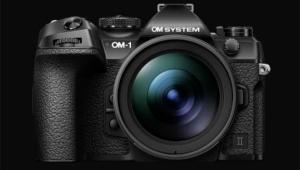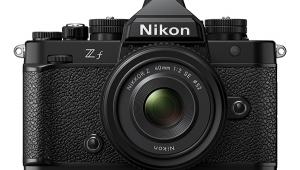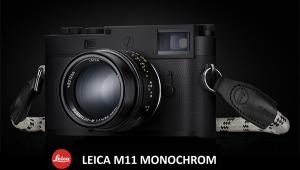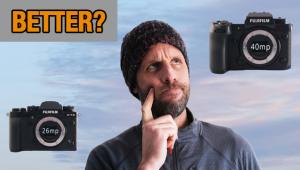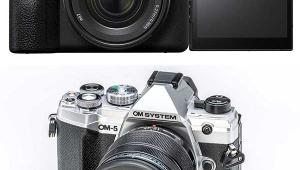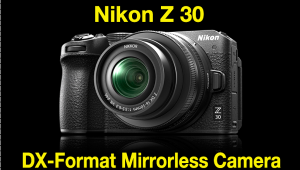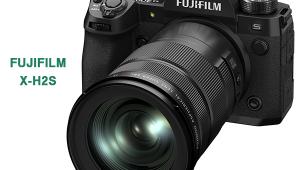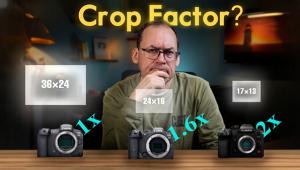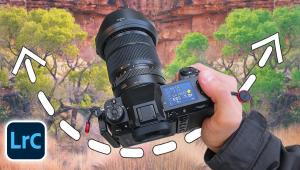Our Favorite Gear: 4 Hot New Photo Products

Multi-Tasker
To say that the Panasonic Lumix GH5 is versatile is an understatement. The long-awaited follow-up to the GH4, which was beloved by photographers and videographers alike, the GH5 takes the roots of its predecessor and expands on them. The somewhat larger but still mobile GH5 mirrorless camera is equipped with a 20.3MP Micro Four Thirds Live MOS sensor with no low-pass filter for sharper image results. The GH5’s weatherproof camera body houses a new Venus Engine image processor designed to deliver natural-looking image details while eliminating false colors at the edges. There’s also an improved electronic viewfinder on top with more resolution; a fully articulating 3.2-inch, 1.62K-dot touchscreen LCD on back; two SD card slots; and an HDMI port. The GH5’s five-axis in-camera image stabilization will keep your photos sharp and your videos steady. Speaking of video, for the first time in a mirrorless camera, the GH5 can record smooth, high-precision 4K 60p/50p and faithful 4:2:2 10-bit 4K video. The GH5 also features “6K PHOTO,” which lets you extract 18MP still images from video with nine times the pixel count of Full HD.
Panasonic Lumix GH5
$1,999
panasonic.com

Wide Eye
The Sigma 14mm f/1.8 DG HSM Art is the world’s first ultra-wide lens with an f/1.8 aperture and it’s tailor-made for shooting architecture, astrophotography, documentary, and landscapes. The fast aperture also means it’s great for low-light photography. Combining three special FLD (Low Dispersion) glass elements and four SLD (Special Low Dispersion) elements with an aspherical design, the Sigma 14mm f/1.8 DG HSM Art is designed to deliver ultra-wide images with virtually no distortion, ghosting, or flare. There’s also a fast and quiet autofocus system thanks to Sigma’s Hyper Sonic Motor, with full-time manual focus override just by rotating the focus ring. Minimum focusing distance is 10.6 inches, letting you capture unique, wide-angle close-ups with sprawling backgrounds. When Sigma says it’s an Art lens, they mean it!
Sigma 14mm f/1.8 DG HSM Art
Price TBD (will be available in Canon, Nikon, and Sigma mounts)
sigmaphoto.com

F Stopper
Here’s another popular camera that recently got a deserved refresh. Fujifilm’s X100 series of rangefinder-style digital cameras went on sale in 2011 and six years and four iterations later, we now have the X100F. Featuring a third-generation 24.3MP X-Trans CMOS III APS-C image sensor and the tried-and-true Fujinon 23mm f/2 fixed lens that’s equivalent to 35mm in the 35mm format, the X100F may look similar to its predecessor but much has changed. The X100F boasts enhanced autofocus speed with several AF modes, including Single Point, Zone, and Wide/Tracking for both AF-C for moving subjects and AF-S for stationary subjects. The number of focus points has been significantly increased to 91—almost double the 49 points in previous models. As a result, Fujifilm says the X100F has an enhanced ability for focusing on points of light as well as low-contrast subjects. There’s also a new joystick on back for autofocus control and a built-in ISO dial with expanded sensitivity: ISO 200-12,800, expandable to ISO 100-51,200. Another new feature is the ACROS film-simulation mode, offering deep blacks and smooth gradation for monochrome images.
Fujifilm X100F
$1,300
fujifilmusa.com
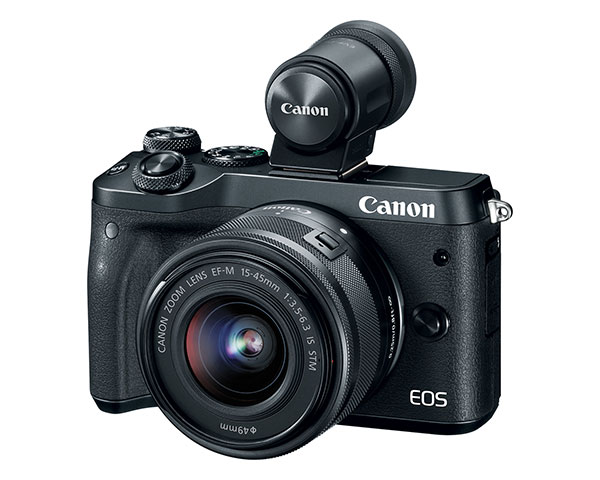
Faster Focuser
It’s no secret that Canon has been a bit behind in the mirrorless camera market. That should change with the new EOS M6, which like its stablemate, Canon’s flagship M5 mirrorless camera from 2016, has a much faster autofocus system. Both cameras feature Dual Pixel CMOS AF and offer high-speed continuous shooting at up to 7 frames per second (fps), and up to 9 fps with AF Lock. The M6 also has in-camera five-axis digital image stabilization; Full HD (60p); a three-inch tilting touchscreen LCD on back; built-in Wi-Fi, NFC, and Bluetooth; and a DIGIC 7 image processor, which can shoot from ISO 100-25,600. The key difference between the M6 and its top-of-the-line brother is that the M5 has a built-in electronic viewfinder, while the M6 doesn’t. Instead you can purchase an optional external electronic viewfinder—the EVF-DC2 ($209)—for the M6, which offers approximately 2.36 million dots of resolution.
Canon EOS M6
$779 (body only)
usa.canon.com
The Goods spotlights the hottest premium photo gear out there. If you have a product you’d like considered for The Goods, e-mail images and info to editorial@shutterbug.com
- Log in or register to post comments



